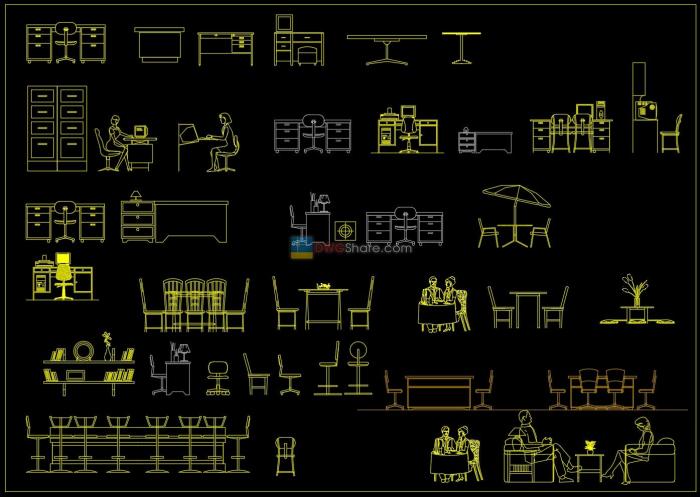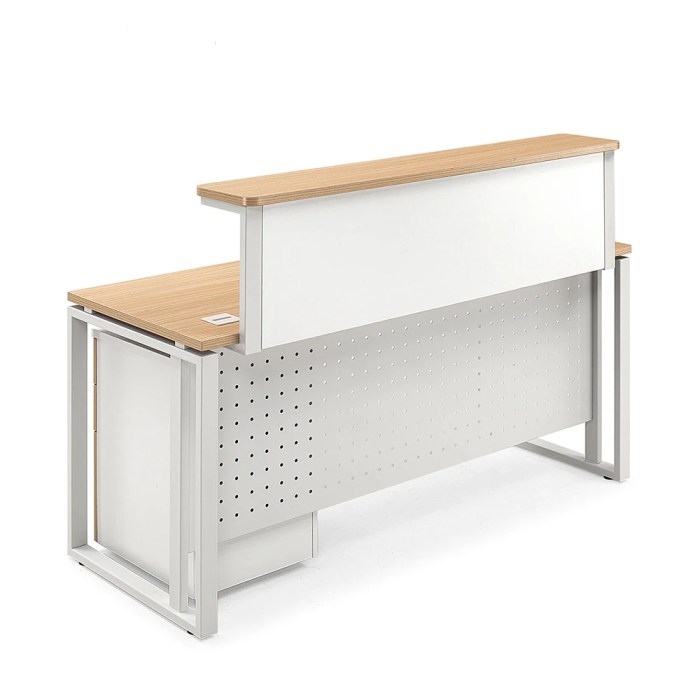Frontage furniture plays a pivotal role in shaping the aesthetics and functionality of various spaces. From grand entrances to cozy living areas, these pieces serve as both decorative elements and practical solutions.
In this comprehensive guide, we delve into the world of frontage furniture, exploring its types, materials, styles, and applications. We provide insights into the latest trends and offer practical tips to help you choose and maintain the perfect pieces for your space.
Frontage Furniture Definition
Frontage furniture refers to pieces of furniture that are specifically designed to be placed against a wall or in front of a window.
These pieces are typically characterized by their low profile and lack of backs, making them ideal for creating a sense of openness and flow in a room. Common examples of frontage furniture include sofas, loveseats, chairs, and ottomans.
When it comes to beautifying your home, frontage furniture is the first impression that catches the eye. These pieces, like an exquisite painting, adorn the face of your abode. If you seek to enhance the functionality of your frontage furniture, consider incorporating provisions furniture . These specialized items, meticulously crafted to cater to specific needs, will not only complement your existing furniture but also elevate the overall aesthetic of your home’s exterior.
Types of Frontage Furniture
- Sofas and Loveseats:These pieces are typically upholstered and have a low profile, making them perfect for creating a cozy and inviting seating area.
- Chairs:Frontage chairs come in a variety of styles, from traditional to modern, and can be used to add extra seating or create a focal point in a room.
- Ottomans:Ottomans are versatile pieces that can be used for seating, as footrests, or as coffee tables. They are often upholstered in a variety of fabrics and colors, making them easy to match with any décor.
Types of Frontage Furniture
Frontage furniture encompasses a diverse range of pieces designed to enhance the aesthetic appeal and functionality of a building’s exterior.
When it comes to decorating your home’s exterior, frontage furniture plays a crucial role in creating a welcoming and inviting atmosphere. From cozy seating to stylish tables, these pieces not only enhance the aesthetic appeal of your home but also provide a comfortable and functional space for relaxation and entertaining.
If you’re looking for high-quality and sustainable furniture, consider exploring the exquisite collection of citizenry furniture . With their commitment to ethical sourcing and timeless designs, they offer a wide range of frontage furniture that will elevate the charm of your home’s exterior.
These pieces can vary in style, material, and purpose, serving different functions and complementing various architectural designs.
| Type | Description | Examples |
|---|---|---|
| Porches | Covered outdoor spaces attached to a building, providing shade and protection from the elements. | Front porches, wrap-around porches, screened-in porches |
| Patios | Open-air, ground-level outdoor spaces typically paved with materials like concrete, brick, or stone. | Backyard patios, poolside patios, rooftop patios |
| Decks | Elevated outdoor platforms made from wood, composite materials, or metal, often attached to the back of a house. | Single-level decks, multi-level decks, wraparound decks |
| Fences | Vertical structures surrounding a property, providing privacy, security, and aesthetic appeal. | Wooden fences, vinyl fences, chain-link fences, wrought iron fences |
Materials Used in Frontage Furniture
The choice of materials used in frontage furniture greatly influences its durability, aesthetic appeal, and functionality. Various materials, each with its unique characteristics, are employed to create these pieces.
The following materials are commonly used in frontage furniture:
- Wood: Wood is a classic and versatile material known for its natural beauty and durability. It offers a wide range of options, including solid wood, veneer, and engineered wood, each with its advantages and disadvantages.
- Metal: Metal is another popular choice for frontage furniture, particularly for contemporary and industrial styles. It provides strength, durability, and a sleek, modern aesthetic.
- Glass: Glass is a transparent or translucent material that adds a touch of elegance and sophistication to frontage furniture. It can be used for tabletops, shelves, and decorative accents.
- Plastic: Plastic is a lightweight and versatile material that offers a wide range of colors, textures, and finishes. It is often used for outdoor furniture and budget-friendly options.
- Upholstery: Upholstery refers to the fabric or leather used to cover sofas, chairs, and other upholstered furniture. It provides comfort, style, and durability.
Styles of Frontage Furniture
Frontage furniture showcases a diverse array of styles, each embodying unique characteristics that complement different interior design aesthetics. From classic and elegant to modern and contemporary, the range of styles offers ample options to suit individual preferences and enhance the visual appeal of any space.
The following table provides an overview of some prominent styles of frontage furniture, along with examples and descriptions:
| Style | Examples | Description |
|---|---|---|
| Traditional | Queen Anne, Chippendale, Victorian | Ornate designs, curved lines, and intricate carvings, often made from mahogany or walnut |
| Contemporary | Minimalist, Scandinavian, Mid-Century Modern | Clean lines, geometric shapes, and functional designs, often featuring neutral colors and natural materials |
| Modern | Art Deco, Bauhaus, International | Bold shapes, geometric patterns, and innovative materials, such as chrome, glass, and plastic |
| Rustic | Log furniture, reclaimed wood, distressed finishes | Natural, earthy tones, rugged textures, and a focus on sustainability |
Design Considerations for Frontage Furniture
When designing frontage furniture, it’s crucial to consider the space’s dimensions, style, and functionality. The right furniture can enhance the aesthetics and usability of the area.
Frontage furniture can significantly enhance the overall aesthetic of any office space. For those seeking high-quality and stylish options, consider exploring the national office furniture collection. Their wide selection of contemporary and traditional designs will complement any interior, while providing exceptional comfort and functionality.
When it comes to elevating the visual appeal of your office, frontage furniture plays a crucial role, and the national office furniture range offers an array of choices to suit every taste.
To choose the appropriate frontage furniture, start by measuring the available space and determining the intended purpose. Consider the traffic flow and sightlines to ensure smooth movement and unobstructed views.
Placement and Positioning
- Place furniture against walls or in corners to maximize space utilization.
- Position sofas and chairs facing each other to create a conversational area.
- Use tables as focal points or to define different zones within the space.
- Consider the height and scale of furniture to maintain a balanced and cohesive look.
Trends in Frontage Furniture
Frontage furniture, the first impression of any home, continues to evolve with time, reflecting the latest design trends and innovations. Here’s a glimpse into the current trends that are shaping the industry:
The emphasis is now on creating inviting and functional spaces that blend aesthetics with practicality. Furniture pieces are becoming more versatile, serving multiple purposes and adapting to different settings.
Emerging Styles and Materials
Contemporary and minimalist styles dominate the frontage furniture landscape, characterized by clean lines, neutral colors, and geometric shapes. Natural materials like wood, stone, and leather are making a comeback, adding warmth and texture to spaces.
- Biophilic Designs:Frontage furniture incorporates elements of nature, such as organic shapes, natural materials, and patterns inspired by the outdoors.
- Smart Furniture:Technology is seamlessly integrated into furniture, offering features like charging stations, built-in lighting, and voice-activated controls.
- Sustainable Materials:Environmentally friendly materials like recycled wood, bamboo, and cork are gaining popularity, contributing to a greener and more sustainable living.
Trendy Frontage Furniture Pieces
- Curved Sofas:Sofas with curved silhouettes create a cozy and inviting atmosphere, adding a touch of elegance to any living room.
- Statement Chairs:Bold and eye-catching chairs in vibrant colors or unique shapes serve as focal points, making a statement in any space.
- Multi-Functional Ottomans:Ottomans are no longer just footrests; they now double as storage units, extra seating, or coffee tables, maximizing space and functionality.
- Rattan and Woven Pieces:Natural materials like rattan and woven fibers add texture and warmth to outdoor and indoor spaces, creating a relaxed and inviting ambiance.
Maintenance and Care for Frontage Furniture

Proper maintenance and care are essential to extend the lifespan and preserve the beauty of frontage furniture. Different materials require specific care techniques. Regular cleaning and occasional deep cleaning will help keep your frontage furniture looking its best.
Cleaning
- Regular cleaning:Use a soft, damp cloth to wipe down surfaces regularly. Avoid using harsh chemicals or abrasive cleaners.
- Deep cleaning:For deeper cleaning, use a mild detergent mixed with water. Apply the solution to a clean cloth and wipe down the furniture. Rinse with clean water and dry thoroughly.
Specific Care for Different Materials
- Wood:Use a furniture polish or wax to protect the wood from moisture and scratches. Avoid using harsh cleaners or abrasive materials.
- Metal:Clean metal surfaces with a mild detergent and water. Avoid using harsh cleaners or abrasive materials that can scratch the surface.
- Glass:Clean glass surfaces with a glass cleaner and a soft cloth. Avoid using abrasive materials that can scratch the glass.
- Upholstery:Vacuum upholstered furniture regularly to remove dust and debris. For deeper cleaning, use a mild detergent and water solution. Avoid using harsh chemicals or abrasive materials.
Maintenance Tips
- Avoid placing frontage furniture in direct sunlight, as it can fade or damage the materials.
- Use coasters under glasses and other objects to prevent scratches.
- Rearrange furniture occasionally to prevent uneven wear and tear.
- Inspect furniture regularly for any damage or wear. Address any issues promptly to prevent further damage.
Applications of Frontage Furniture

Frontage furniture finds diverse applications in various settings, offering both functional and aesthetic benefits. From residential to commercial spaces, it can enhance the appeal and functionality of any room.
Residential Applications
In residential settings, frontage furniture serves multiple purposes:
- Living Rooms:Accent chairs, sofas, and ottomans provide comfortable seating and enhance the overall style of the living room.
- Bedrooms:Headboards, nightstands, and dressers create a cohesive and functional bedroom environment.
- Dining Rooms:Dining tables and chairs provide a comfortable and stylish space for meals.
Commercial Applications, Frontage furniture
Frontage furniture also plays a significant role in commercial spaces:
- Offices:Reception desks, conference tables, and executive chairs contribute to a professional and welcoming atmosphere.
- Retail Stores:Display cases, shelves, and point-of-sale counters showcase products and enhance the shopping experience.
- Hotels:Headboards, bedside tables, and seating areas provide comfort and style for guests.
Closure: Frontage Furniture

Whether you seek to create a grand statement or add a touch of warmth and style, frontage furniture offers endless possibilities. By understanding the different types, materials, and styles available, you can select pieces that perfectly complement your space and elevate its overall ambiance.
Essential Questionnaire
What is the purpose of frontage furniture?
Frontage furniture is designed to enhance the appearance and functionality of an entryway or other prominent space. It can serve as a welcoming statement piece, provide storage solutions, and define the flow of a room.
What are the different types of frontage furniture?
Frontage furniture encompasses a wide range of pieces, including consoles, sideboards, benches, ottomans, and more. Each type offers unique features and serves specific purposes.
How do I choose the right frontage furniture for my space?
Consider the size, style, and functionality of your space when selecting frontage furniture. The piece should complement the existing decor and provide the desired level of storage or seating.




Leave a Comment